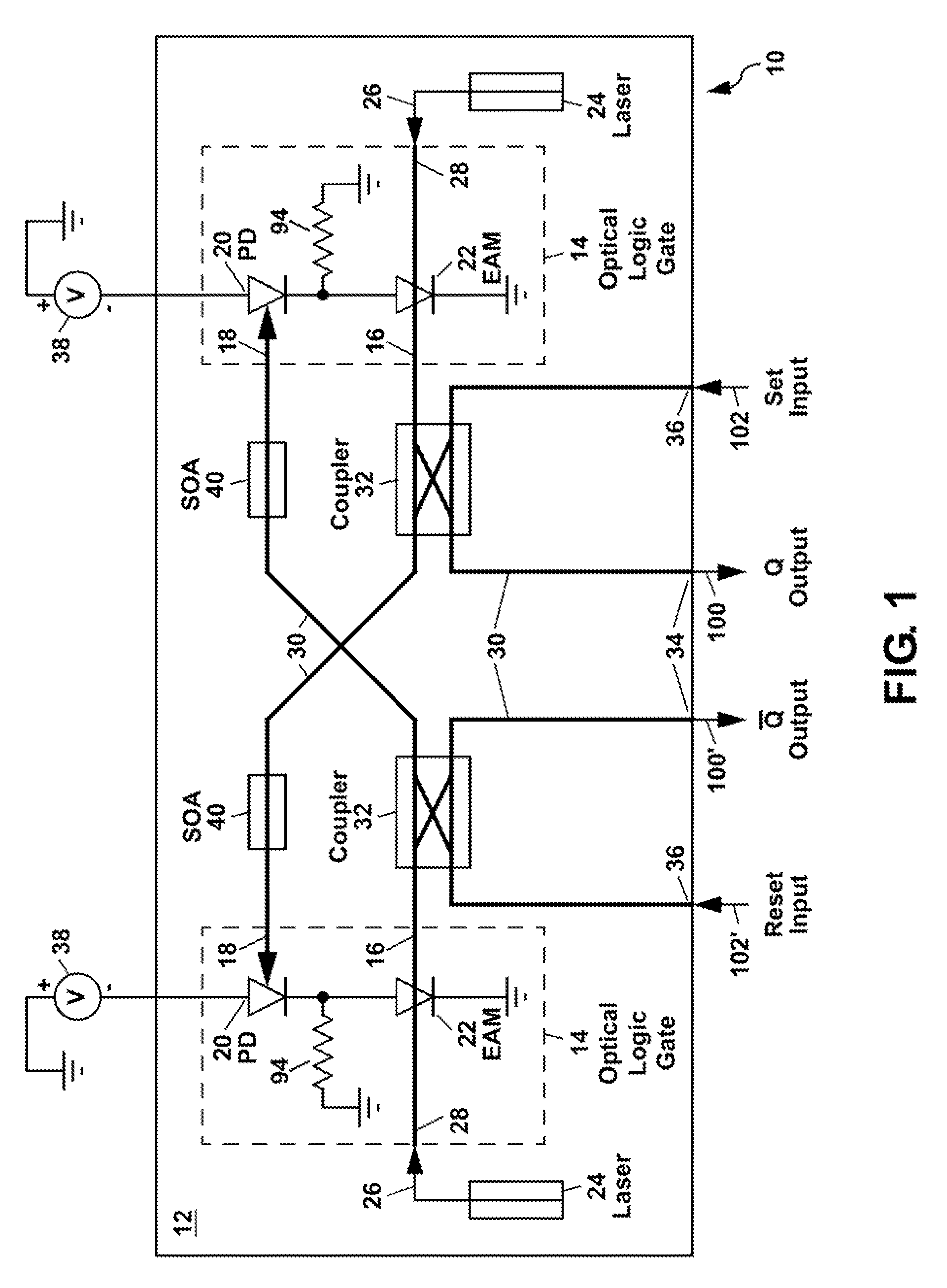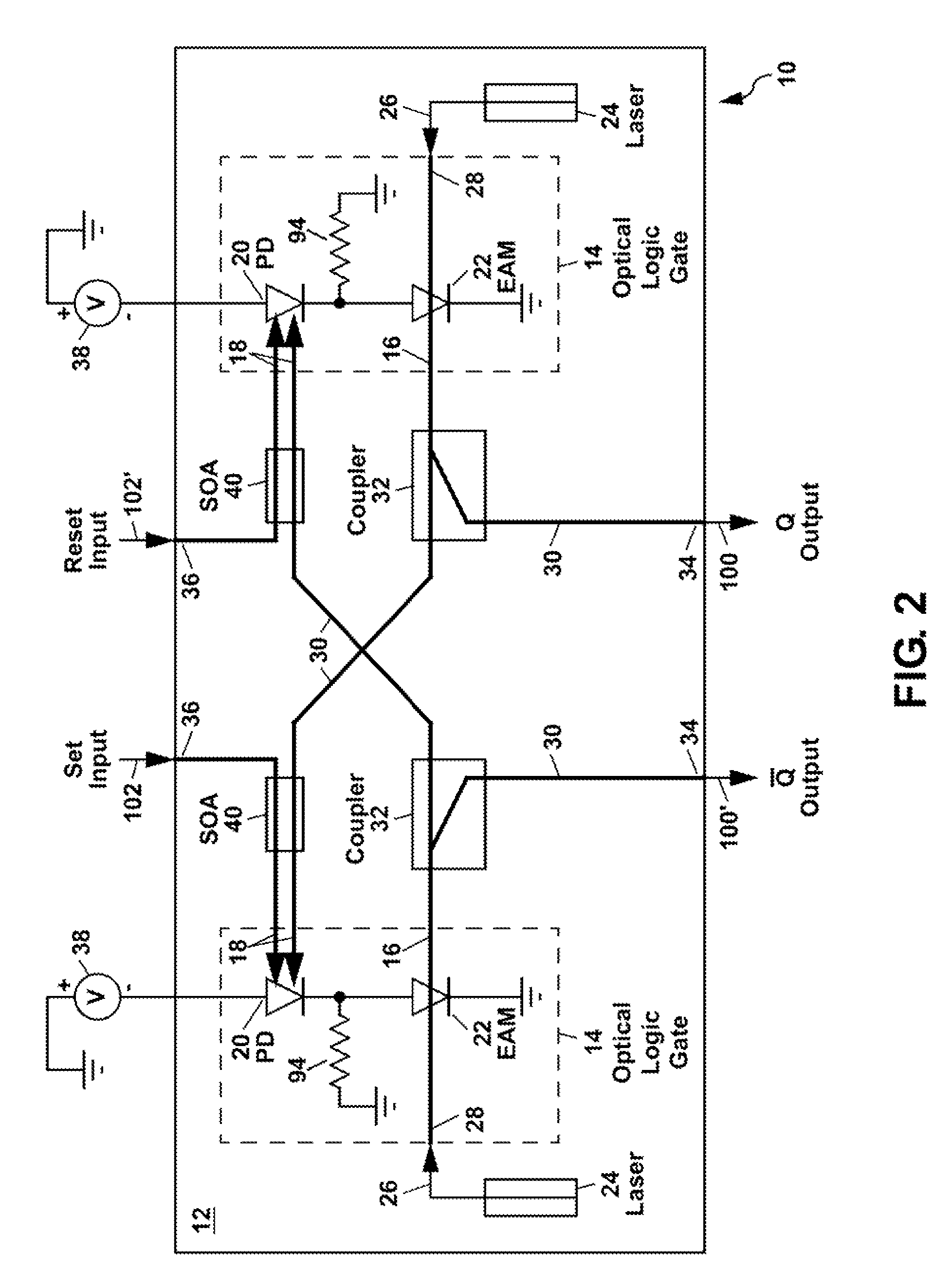Optical data latch
a technology of optical information and latches, applied in logic circuits, cladded optical fibres, instruments, etc., can solve the problems of undesirable asynchronous operation, prior digital optical logic gates are incapable of storing optical information being processed, etc., and achieve the effect of increasing the operating speed
- Summary
- Abstract
- Description
- Claims
- Application Information
AI Technical Summary
Benefits of technology
Problems solved by technology
Method used
Image
Examples
Embodiment Construction
[0033]Referring to FIG. 1, there is shown a schematic diagram of a first example of the optical data latch 10 of the present invention which can be formed as a photonic integrated circuit (PIC). The optical data latch 10 comprises a substrate 12 on which are formed a pair of optical logic gates 14 which are connected in a cross-coupled arrangement whereby an output 16 of each optical logic gate 14 is optically connected to a photodetector input 18 of the other optical logic gate 14. This cross-coupled arrangement of the two optical logic gates 14 forms a bi-stable optical feedback loop which forces the outputs 16 of the pair of optical logic gates 14 to be exactly opposite of each other so that when one output 16 is bright (i.e. having a relatively high level of light which corresponds to a logical “1” state), then the other output 16 will be dark (i.e. having little or no light which corresponds to a logical “0” state). In this way, the optical data latch 10 can store a bit of opti...
PUM
 Login to View More
Login to View More Abstract
Description
Claims
Application Information
 Login to View More
Login to View More - R&D
- Intellectual Property
- Life Sciences
- Materials
- Tech Scout
- Unparalleled Data Quality
- Higher Quality Content
- 60% Fewer Hallucinations
Browse by: Latest US Patents, China's latest patents, Technical Efficacy Thesaurus, Application Domain, Technology Topic, Popular Technical Reports.
© 2025 PatSnap. All rights reserved.Legal|Privacy policy|Modern Slavery Act Transparency Statement|Sitemap|About US| Contact US: help@patsnap.com



